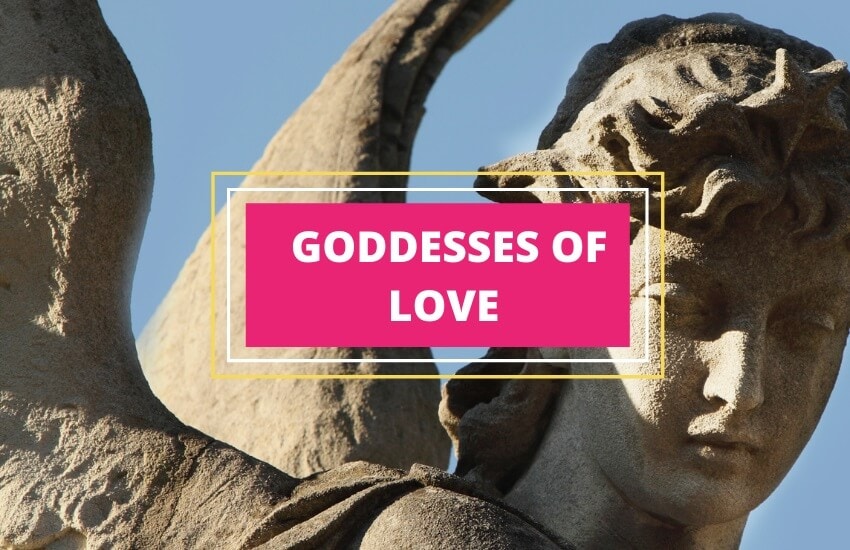
Table of Contents
Throughout history, almost every culture has developed mythologies depicting different love deities. These myths mirror these cultures’ views on love, romance, marriage, beauty, and sexuality. In most ancient cultures, love deities were usually female as the institution of marriage, as well as beauty and sexuality, were mostly considered a woman’s domain. In this article, we will take a closer look at the most prominent love goddesses across cultures.
1- Aphrodite
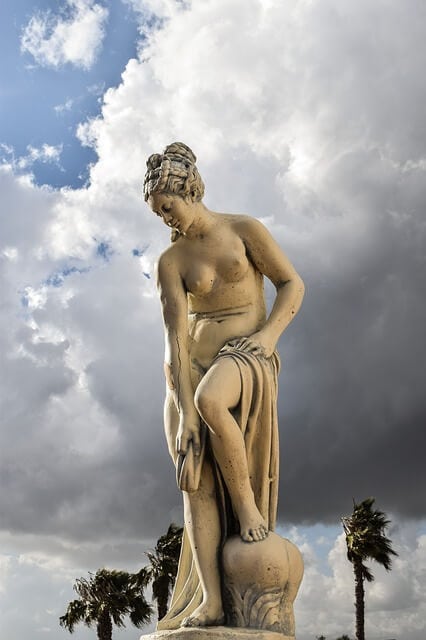
Aphrodite was the ancient Greek goddess of love, sexuality, and beauty. She was the Greek counterpart of the Roman goddess Venus. Aphros in Greek means foam, and it was believed that Aphrodite was born out of sea foam. According to the legend, one Cronus severed the genitals of his father, Uranus, and threw them into the sea. From the bloody foam rose Aphrodite.
For this reason, the goddess was widely honored as the protector of the sea and sailors. At Sparta, Cyprus, and Thebes, she was also worshiped as the goddess of war. Nevertheless, she was primarily known as the goddess of beauty, love, fertility, as well as marriage. Even though her cult was generally morally strict and solemn, there was a period when prostitutes saw the goddess as their patron.
2- Branwen
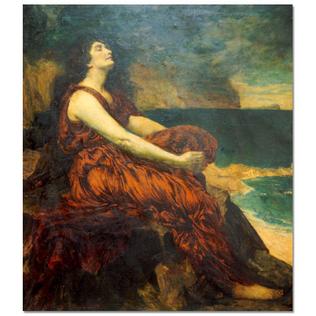
Branwen, also known as White Raven, is a Welsh goddess of love and beauty who was loved by her followers for her compassion and generosity. She’s the daughter of Llyr and Penardim. Bran the Blessed, the giant king of England and the Lands of the Mighty, is her brother, and her husband is Matholwch, king of Ireland.
Together with Ceridwen and Arianrhod, she’s a part of the Triple goddess of Avalon. Branwen represents the maiden aspect of the trio since she’s portrayed as a beautiful and young woman. As a Slandered Wife herself, the goddess is known as the patroness of mistreated wives, releasing them from bondage and blessing them with new beginnings.
3- Frigga
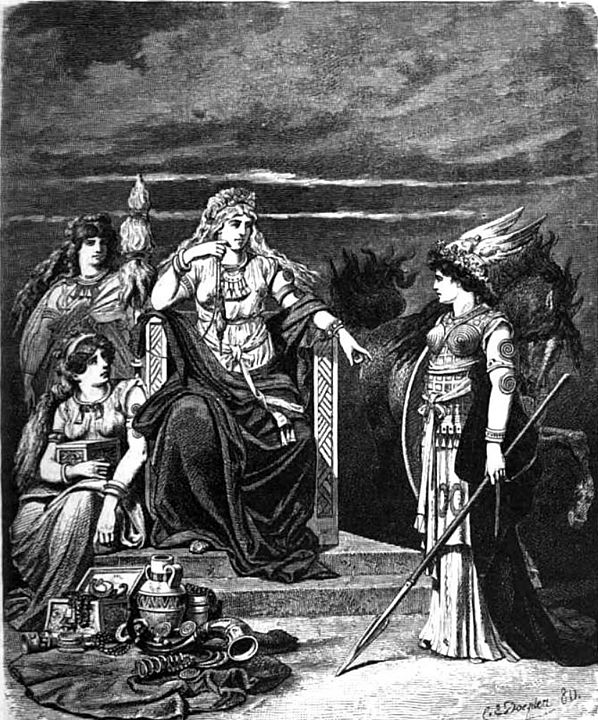
In Norse mythology, Frigga or Frigg, which is the old Norse word for beloved, was the goddess of love, marriage, and motherhood. As the wife of Odin, god of wisdom, and the Queen of Asgard, the dwelling place of divine spirits, Frigga was an extremely prominent deity.
It was believed that Frigga was in charge of threading the clouds and was, therefore, worshiped as the goddess of the sky as well. For this reason, she was usually depicted as wearing a long sky-blue cape. According to the legend, even though the goddess had the god of wisdom as her husband beside her, she would often outsmart him and would regularly give him advice on many issues.
She was also able to foresee the future and was known for her prophecies. Some believe that the fifth day of the week, Friday, was named after her, and it was considered to be the most favorable time to get married.
4- Hathor
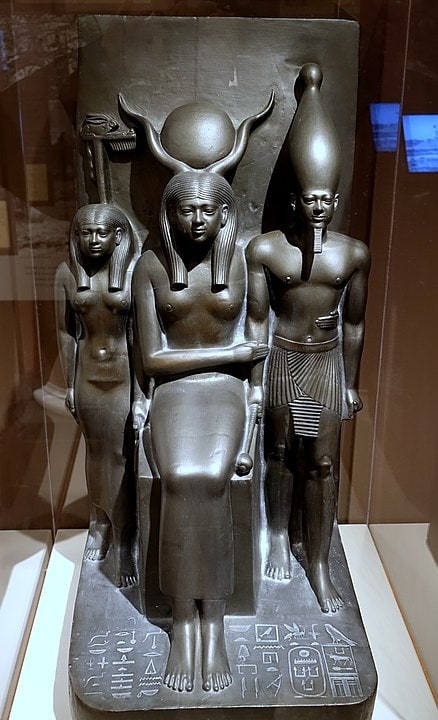
In ancient Egyptian religion, Hathor was the goddess of love, sky, and fertility and was considered a women’s patroness. Her cult had a center at Upper Egypt’s Dandarah, where she was worshiped together with Horus.
The goddess was also closely linked to Heliopolis and the sun-god Ra. It was believed that Hathor was one of Ra’s daughters. She was also considered The Eye of Ra, which was, according to Egyptian mythology, the female counterpart of the sun god and the violent force that defended him from those threatening his rule.
Hathor was most commonly depicted as a woman with the horns of a cow with a sun disk between them, representing her celestial properties. Other times she would take the form of a cow, symbolizing her role as a mother.
5- Hera
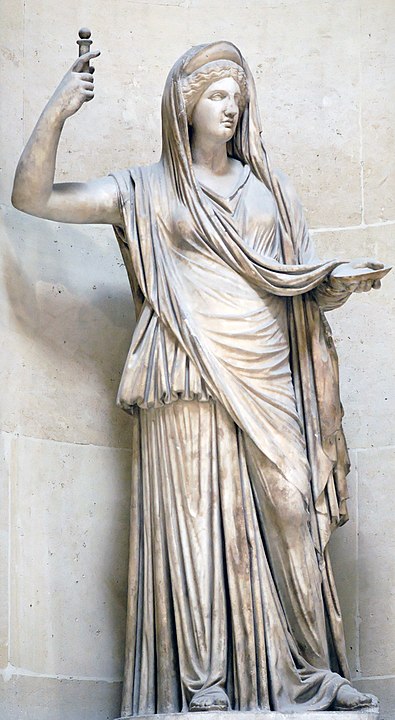
In ancient Greek religion, Hera was the goddess of love and marriage and the protector of women and childbirth. The Romans identified Hera with their goddess Juno. As Zeus’ wife, she was also worshiped as the Queen of Heaven. According to the myth, the goddess was the daughter of the two Titan deities, Rhea and Cronus, and Zeus was her brother. Later, she became Zeus’ consort and was considered the co-ruler of the Olympian deities.
Hera played an important role in Greek literature, where she was often depicted as the vindictive and jealous wife of Zeus, pursuing and fighting off his numerous lovers. However, her cult centered around home and the hearth with family relationships as its focal point. She was also considered the patroness of numerous cities in Greece.
6- Inanna
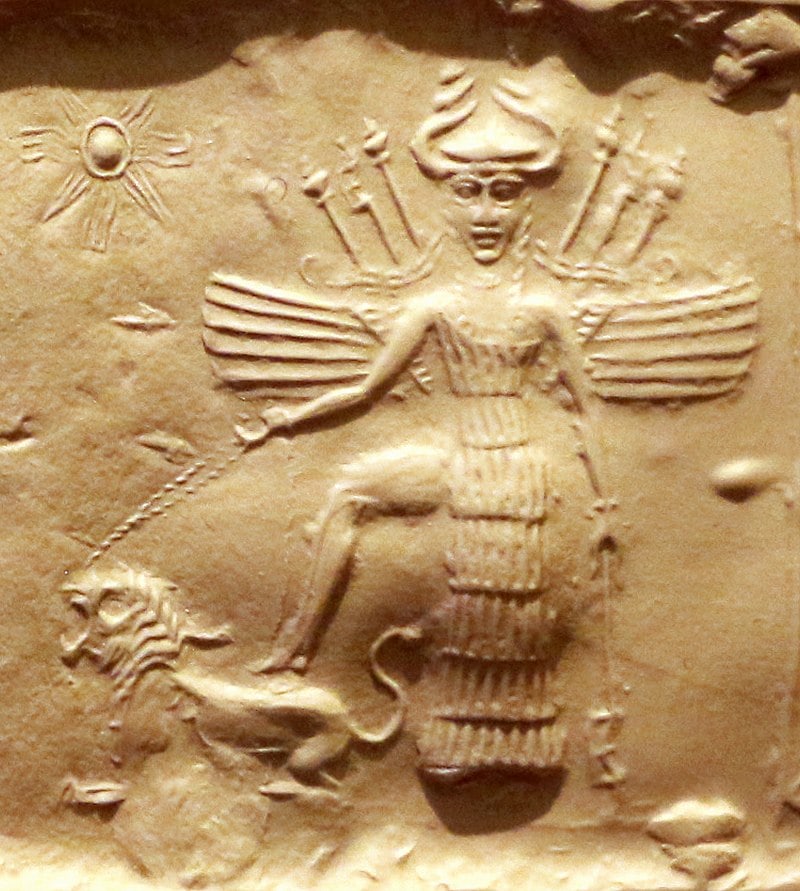
Inanna, also known as Ishtar, according to the Akkadians, was the ancient Sumerian goddess of love, fertility, sensuality, procreation, but also war. She was also associated with the morning star, the brightest celestial object in mornings and evenings, and was often identified with the Roman goddess Venus. The Babylonians, Akkadians, and Assyrians also called her the Queen of Heaven.
Her cult had its center at the Eanna Temple in the Uruk city, and she was considered its patron saint. The goddess cult was initially worshiped by the Sumerians and was associated with different sexual rites. Later it was adopted by the East-Semitic groups, including Babylonians, Akkadians, and Assyrians, and was especially venerated by the Assyrians, who worshiped her as the highest deity of their pantheon.
Inanna’s most prominent myth is about her descent and return from the ancient Sumerian Underworld, Kur. According to the myth, the goddess attempted to conquer the kingdom of her sister Ereshkigal, who ruled over the Underworld. However, her conquest was futile as she was found guilty of pride and condemned to stay in the Underworld. But three days later, Enki, with the help of two androgynous beings, rescued her, and her husband Dumuzud was taken as her replacement.
7- Juno
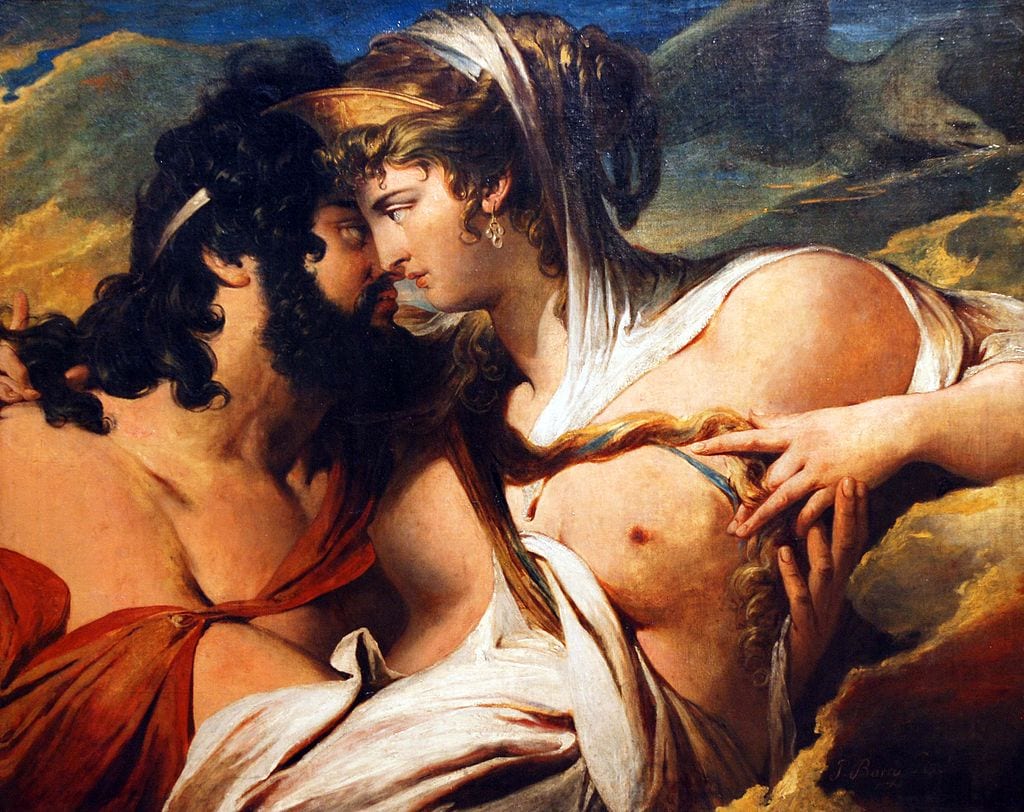
In Roman religion, Juno was the goddess of love and marriage and was considered the chief goddess and Jupiter’s female counterpart. She’s equated to Hera. Juno was worshiped as the part of the Capitoline triad, together with Minerva and Jupiter, initiated by the Etruscan kings.
As the protector of childbirth, known as Juno Lucina, the goddess had a temple dedicated to her on the Esquiline Hill. However, she was mostly known as the patroness of women, associated with all the female principles of life, most commonly marriage. Some believed the goddess was the guardian angel of all women and that each woman had her own juno, just as all the man had genius.
8- Lada
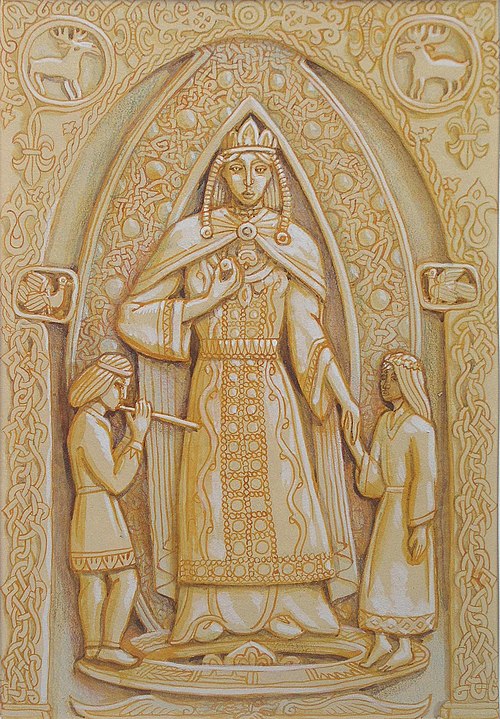
Lada was the goddess of spring, love, sexual desire, and eroticism in Slavic mythology. Her masculine counterpart was her brother Lado, and some Slavic groups worshiped her as the mother goddess. Upon the arrival of Christianity, it was believed that her cult was transferred to the worshiping of the Virgin Mary.
Her name stems from the Czech word lad, meaning harmony, order, understanding, and the word can be translated as beautiful or cute in the Polish language. The goddess first appeared in the 15th and 16th century as the virgin goddess of fertility and love and the patroness of marriages, harvests, family, women as well as children.
She appears in many Russian folk tales and songs where she’s portrayed as a tall and voluptuous woman in her prime, with long and golden hair weaved as a crown around her head. She was considered an embodiment of eternal youth and divine beauty, and a symbol of motherhood.
9- Oshun
In the Yoruba religion of West Africa, Oshun is an orisha or a divine spirit, presiding over fresh waters, love, fertility, and feminine sexuality. As one of the most venerated and prominent orishas, the goddess is associated with rivers, divination, and destiny.
Oshun is considered the patroness of the Osun River in Nigeria, which was named after her. The river flows through the Oshogbo city, where the Sacred Grove, called Osun-Osogbo, is dedicated to her and considered the goddess’ principal sanctuary. A two-week festival called the Osun-Osogbo Festival is celebrated every year in August in her honor. It takes place at the Osun River banks, close to the goddess’ Sacred Grove.
10- Parvati
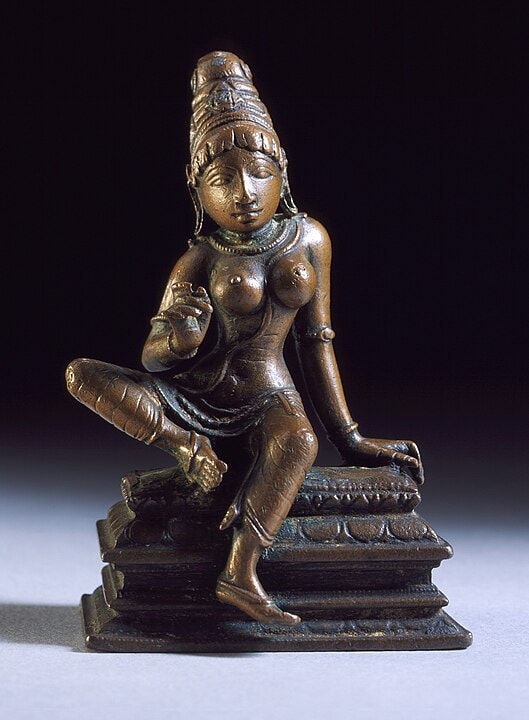
In Hinduism, Parvati, which in the Sanskrit language means The Daughter of the Mountain, is the benevolent goddess of love, marriage, devotion, parenting, and fertility. The goddess was also known as Uma, and she was married to Shiva, the supreme god of Hinduism.
The legend says that Shiva fell in love with Parvati as she was the daughter of the great mountain Himalaya and they had two sons. Their first son, Kumara, was born out of Shiva’s seed without her agency. Later, without her husband’s approval, the goddess created their other child, the elephant-headed deity, called Ganesha.
The goddess was often depicted as a beautiful and mature woman and always together with her consort, as his companion observing his miraculous performances. Many of the Tantras, sacred texts of Hindu sects honoring Shiva, were written as dialogs between Shiva and Parvati. Many people believe Parvati’s an indispensable part of Shiva’s cult, having a profound effect on his life and making him complete.
11- Sri Lakshmi
Sri Lakshmi, sometimes referred to only as Sri, meaning prosperity, or Lakshmi, meaning good fortune, is the Hindu Goddess associated with love, beauty, and wealth. According to myth, she’s married to Vishnu, and much like the Greek Aphrodite, was also born out of the sea.
Lakshmi is a highly venerated and beloved goddess in Hinduism, and the god Vishnu is often referred to as the Husband of Lakshmi. The goddess is also known as the Lotus Goddess, with the lotus flower as her primary symbol, representing wisdom, abundance, and fertility. She’s also often depicted with a bucket filled with rice and gold coins falling out of her hands.
12- Venus
Venus is the ancient Roman goddess of love and beauty, associated with the Greek Aphrodite. Initially, Venus was associated with fruitfulness, cultivated fields, and gardens, but later was attributed almost all the aspects of her Greek counterpart. In early times, she had two Latin temples dedicated to her, and there was no record of her worship in the oldest Roman calendar. Later, her cult became the most prominent in Rome, stemming from her temple in the Latin Ardea.
According to the legend, Venus was the daughter of Jupiter and Dione, was married to Vulcan, and had one son, Cupid. She was known for her romantic affairs and intrigues with both mortals and gods and was attributed both positive and negative feminine aspects.
At the same time, however, she was also known as Venus Verticordia and the patroness of young girls’ chastity. She’s commonly portrayed as a beautiful young woman with voluptuous curves and a flirty smile. The most famous depiction of her is the statue Venus de Milo, also known as Aphrodite de Milos.
To Wrap Up
We’ve gathered the most prominent love goddesses from different cultures around the world. Although the myths surrounding them differ in many ways, the majority of these deities are essentially the same, presiding over love relationships, fertility, beauty, and motherhood. These concepts can be found around the world in different mythologies, signifying their importance and universality.








